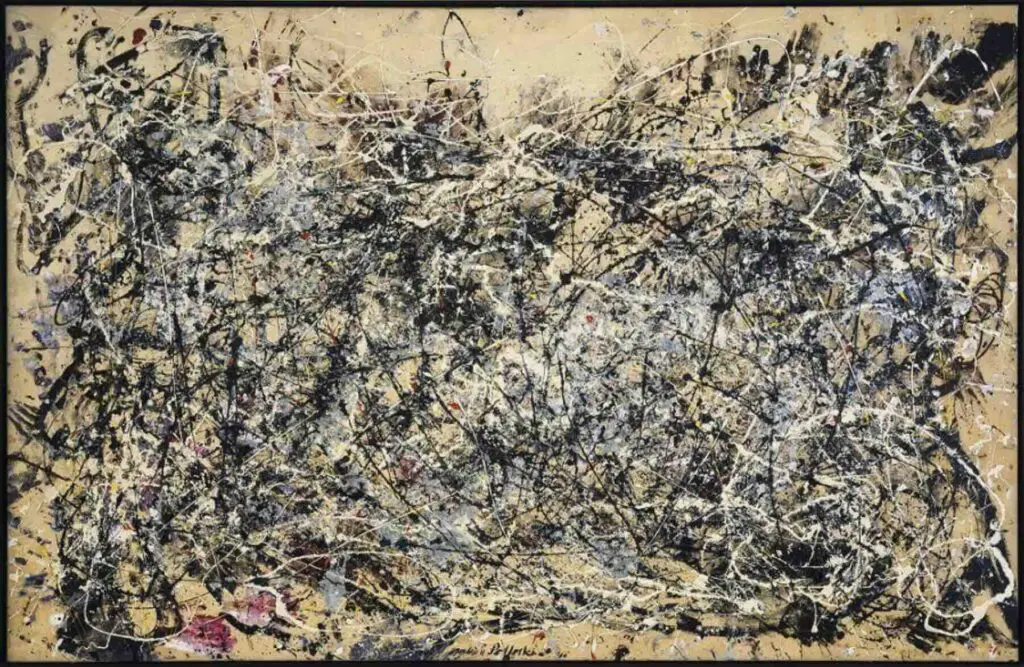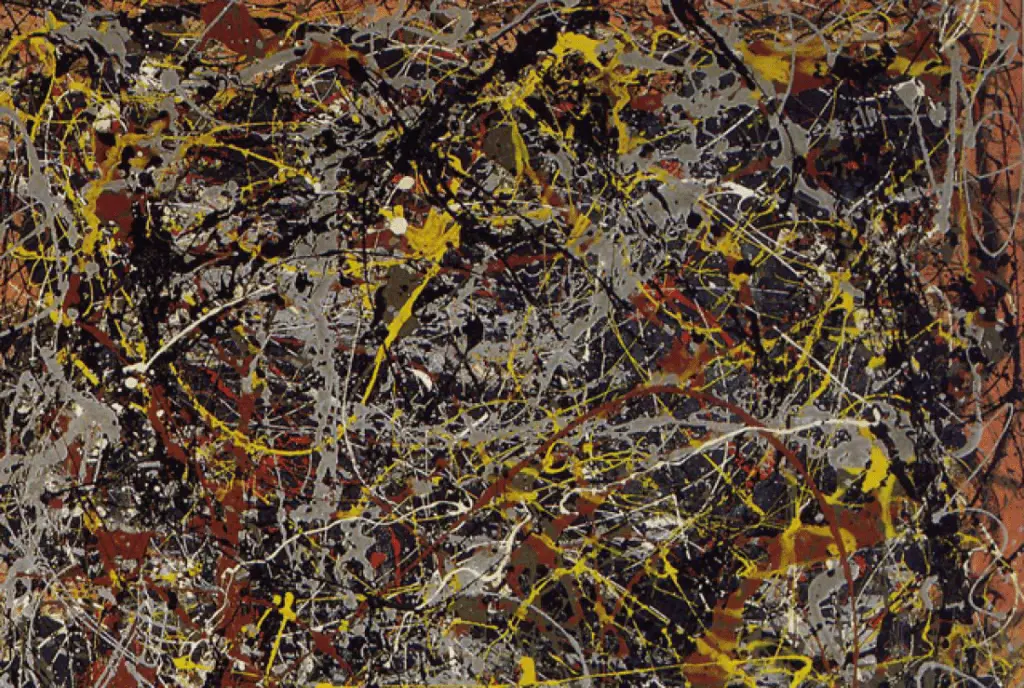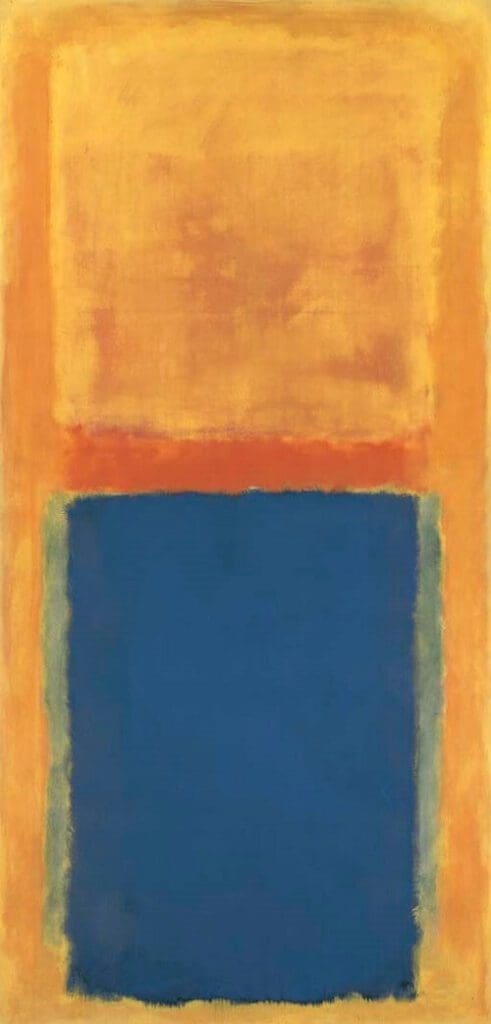Abstract art represents a bold transformation in the art world, moving from realistic renderings of the physical realm to focusing on the essence of shape, color, and line. This shift has not only reflected changes within the art community itself but has also mirrored broader societal and technological shifts.
From its early pioneers to the digital experimenters of today, abstract art continues to evolve, challenging our perceptions and expanding the horizons of artistic expression.
Table of Contents
- The Evolution of Abstract Art
- Techniques and Materials in Abstract Painting
- Understanding Abstract Art
- Influential Abstract Artists
- Related Questions
The Evolution of Abstract Art
Abstract art marks a significant departure from the traditional portrayal of physical objects and landscapes, embracing an art form that emphasizes shape, color, form, and lines without adhering to accurate representation. This evolution into contemporary abstract art is intriguing and complex, mirroring societal changes and the art world’s shifting priorities over the decades.
The seeds of abstract art were sown in the late 19th and early 20th centuries, with artists like Wassily Kandinsky, often celebrated as a pioneer of abstract art. Kandinsky believed that colors and shapes had intrinsic values and could be used to express emotion and spirituality beyond the physical world. This radical idea was revolutionary, challenging the then-dominant art forms focused on realism and accurate depictions of subjects.
As the 20th century progressed, various movements contributed to the development of abstract art. Cubism, led by Pablo Picasso and Georges Braque, dissected objects into geometric shapes, presenting multiple viewpoints simultaneously and deviating from traditional perspectives. This fragmentation was a significant step away from realism, encouraging further abstraction in art.
Following Cubism, movements like Futurism and Constructivism pushed the boundaries further, incorporating dynamic movement and technological themes into their works. Meanwhile, Dadaism introduced a form of anti-art, challenging the very definition of art and the artist’s role, which, in turn, influenced the development of abstraction by valuing concept over form.
The post-World War II era saw an explosion of abstract art movements, particularly in the United States, with the advent of Abstract Expressionism. Artists like Jackson Pollock and Mark Rothko moved away from recognizable forms, focusing on spontaneous, emotional expression through abstract canvases. Pollock’s drip paintings, where he would fling, pour, and dribble paint onto horizontal canvases, were emblematic of this period. They emphasized the act of painting itself, merging the artist’s physical movement with the final artwork.
Minimalism emerged as a response to the expressive energy of Abstract Expressionism, prioritizing simplicity and objectivity. Artists like Frank Stella and Donald Judd reduced art to its essential forms and colors, attempting to remove any semblance of narrative or symbolism. This was a further step toward abstract art as we recognize it today, focusing on the purity of the art object.
In recent years, contemporary abstract art has continued to evolve, incorporating digital technology and new media, expanding its scope. Artists are experimenting with digital painting, video, and even virtual reality to create abstract experiences that challenge perceptions and engage viewers in novel ways.
The journey from the inception of abstract art to its contemporary form illustrates a dynamic evolution, mirroring broader shifts in cultural, technological, and philosophical realms. It reflects artists’ ongoing quest to capture the essence of reality, emotion, and experience beyond the confines of physical representation. The evolution of abstract art is not merely about the progression of art movements but the continual reimagining of what art can be and what it means to be human.

Techniques and Materials in Abstract Painting
Modern abstract painting, while deeply rooted in the rich soil of its diverse history, continuously evolves, manifesting through various techniques and materials that define its current expression. The key to understanding these developments is to recognize the role of experimentation and innovation in shaping the landscape of abstract art.
In terms of techniques, modern abstract artists often gravitate towards mixed media, a method that involves combining traditional painting mediums with non-traditional materials. This approach allows for an unparalleled depth of texture and form as artists layer acrylics with elements like paper, fabric, or found objects, embedding each piece with a unique narrative and tactile experience.
Acrylic paints, a staple in the modern abstract artist’s palette, are flexible, supporting this versatility. Their fast drying time and rich pigmentation enable artists to experiment with various applications, from thin glazes to thick, impasto strokes that add dimension and vitality to the canvas.
Moreover, digital technology has carved its niche within modern abstract painting, both as a tool for creation and as a medium in its own right. Digital painting software allows artists to explore unlimited color palettes and textures without the physical limitations of traditional materials.
Some artists weave these digital creations into physical artworks, printing them onto canvas before applying additional paint or other media layers. This process blurs the lines between the digital and the tangible.
The pouring and fluid art technique has also increased popularity among contemporary abstract artists. This involves diluting paint to a fluid consistency and pouring it onto the canvas, allowing gravity and the fluid dynamics of the paint to shape the artwork.
The resulting pieces often feature vibrant colors and organic, cell-like patterns. This method underscores the modern abstract movement’s fascination with process and the relinquishing of control, letting the medium itself have a voice in the final composition.
One cannot overlook the role of non-traditional substrates in exploring the materials that define modern abstract painting. Moving beyond canvas, artists experiment with painting on metal, wood, or glass, each surface interacting differently with the medium applied to it. Metal, with its reflective qualities, introduces an element of light play and movement, while wood provides a warm, organic texture that can complement or contrast the paint applied to it.
Sustainability and environmentally friendly practices have also influenced the choice of materials in modern abstract art. Some artists opt for recycled or upcycled materials as surfaces to paint on and as incorporated elements within their work. This shift reflects a growing consciousness about the environmental impact of art-making. It adds layers of meaning and context to the artwork, connecting it to broader social and ecological narratives.
In summary, the defining techniques and materials of modern abstract painting are as diverse and dynamic as the genre itself. From integrating digital technology and non-traditional materials to embracing process-oriented methods like fluid art, these elements reflect a continuous expansion of the boundaries of abstract art. Through experimentation and innovation, modern abstract painters explore new horizons, challenging our perceptions and enriching our experiences of the abstract.

Understanding Abstract Art
Understanding and appreciating abstract art might seem like a puzzle without a clear solution. It’s an art that doesn’t try to represent reality as we see it but instead uses shapes, colors, forms, and gestural marks to achieve its effect. So, how do we dive into this intriguing world without getting lost? It requires a shift in perspective and an open mind.
Firstly, know the context. Abstract art doesn’t exist in a vacuum. Each piece is a product of its time, reflecting its creation’s cultural, social, and personal circumstances. By familiarizing yourself with the history behind the art movement or the artist’s biography, you can begin to see the artwork in a new light. It’s not just about the visible elements, the story they tell, and the emotions they evoke.
Next is to engage with the art directly. When faced with an abstract piece, give yourself time to look. What do you see? Instead of searching for recognizable forms or subjects, focus on the elements of the artwork itself. Notice the colors, the lines, the texture, and how they interact. Abstract art often aims to evoke a feeling or mood. Ask yourself, how does this artwork make you feel? This emotional response can be a vital clue in understanding the piece.
Discussion and research can also deepen your appreciation. Art is subjective, and everyone sees something differently. Talk about what you see with others. Hearing different interpretations can open up new pathways of understanding. Additionally, reading about the specific work or artist can provide insights into the intent behind the artwork, adding another layer to your appreciation.
Visiting art galleries or museums with abstract art collections can enhance your understanding. Seeing the artwork in person, experiencing its scale, and observing the nuances of its texture or color that may not be visible in photographs can radically change your perception of a piece.
Finally, experiment with creating your abstract art. There’s no better way to understand the challenges and decisions involved in abstract art than by trying it yourself. Play with colors, shapes, and textures without aiming to create anything specific. This exercise can give you a firsthand appreciation of the creative process behind abstract artworks.
In essence, unlocking the beauty of abstract art requires patience, openness, and a willingness to explore. It’s not about finding the correct answer but embracing the multitude of questions and emotions that abstract art provokes. By engaging with the art on its terms and allowing yourself to experience it fully, you can develop a deep and rewarding appreciation for this challenging yet captivating form of expression.

Influential Abstract Artists
When discussing the trailblazers who have carved the path for abstract art, it’s crucial to delve into the individuals beyond those foundational figures often spotlighted. Helen Frankenthaler, Mark Rothko, and Jackson Pollock have already been noted for their groundbreaking contributions. However, the narrative extends further, embracing artists who, while perhaps less cited in mainstream discourse, have equally propelled the movement into uncharted territories.

The exploration of abstract art, from its emergence to its contemporary forms, showcases a relentless pursuit of expression that transcends the tangible. Through its evolution, abstract art has constantly questioned and redefined the boundaries of what art can be, offering a mirror to the shifting landscapes of culture and technology.
It invites us to see beyond the immediate, to feel and interpret, thus deepening our connection to the world of art and the myriad ways it seeks to understand and depict our human experience.
Anita Louise Art is dedicated to art education, great artists, and inspiring others to find and create their art. We love art that uplifts and inspires. #ArtToMakeYouSmile! #ArtToMakeYouHappy!
If you want to see any of my art, you can find out more by clicking here. If you are interested in what inspires me and my paintings, you can discover more by clicking here.
We have a free newsletter and would love you to be part of our community; you can subscribe to the newsletter by clicking here. I would be happy to talk to you if you have any questions. You can reach me, Anita, by clicking here.
Subscribe to our Anita Louise Art YouTube Channel with great videos and information by clicking here.
Join us for our podcast “5 Minutes With Art.” Spend 5 minutes a week with us to discover and learn about great art and artists. You can find out more about our podcast by clicking here.
Related Questions
Abstractionism In Art Defined: Unlocking Abstract Expression
Among one of the most influential art movements, abstractionism stands as a beacon, reshaping the trajectory of modern art. Abstract art, also known as abstractionism, captivates with its departure from conventional depictions of the visual world. Read on, we explore the essence of abstractionism, delving into its fundamental nature, diverse forms, and the underlying concepts that fuel its creative endeavors.
By clicking here, you can learn more by reading Abstractionism In Art Defined: Unlocking Abstract Expression.
15 Most Famous Abstract Art And Why They Are Famous
Abstract Expressionism is a term applied to the art developed by American painters in the 1940s and 50s. It is associated with the New York School art movement, which signified a change in the world’s art center from Paris, France, to New York City. Gestural brushstrokes characterize the abstract expressionism art movement, mark markings, and the overall impression of spontaneity in the artwork.
You can learn more by reading the blog 15 Most Famous Abstract Art And Why They Are Famous by clicking here.
Abstract Painting Ideas – A Wealth Of Inspiration Awaits
We understand how hard it can sometimes be to find inspiration for Abstract painting, so we will delve into ten suggestions to help artists discover new avenues of inspiration for their abstract artworks. Everything from nature and life experiences to other great artists’ works can help you find the subject matter to paint.
By clicking here, you can discover more by reading Abstract Painting Ideas – A Wealth Of Inspiration Awaits.

